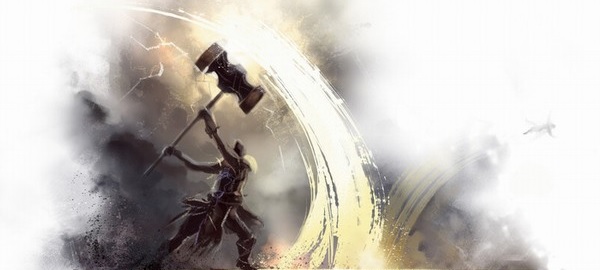City State Entertainment announced that its crowdfunding campaign for Camelot Unchained (working title) has reached its target of $2 million. The TriRealm RvR-focused MMORPG will now receive $3 million in additional funding, including $2 million from studio co-founder and online game industry pioneer Mark Jacobs. The process of ramping up to full development is already under way. Pledges are still being accepted via Kickstarter until May 2 at 11.56 am EDT, and through PayPal until further notice.
Mark Jacobs said:
“The last 30 days have been an incredible journey. We believed there’s an audience for a highly focused game like ours, which has now been proven. What we didn’t expect was how our community would come together so quickly and avidly. Not only is our average pledge off the chart, our backers have been just as intensely supportive in other ways, from providing immense amounts of helpful feedback to translating information into four languages (German, French, Japanese and Korean), and more. Our entire team is grateful beyond words for the way they have inspired us with their fervent interest and amazing enthusiasm.”
During the campaign, the company stated its intention to create a proprietary engine that will be optimized for large-scale battles with hundreds of characters on-screen at one time. Led by co-founder Andrew Meggs, the programming team has made tremendous progress in a very short time. A recent technology demo consistently achieved 200 to 400 frames per second while showing 1,000 characters, each individually rendered at approximately 12,000 polygons without using level of detail, plus smoke and other particle effects.
City State also unveiled initial details about the innovative building system that will be a core element in Camelot Unchained. Employing a building block approach, it will offer unprecedented flexibility. Players will be able to craft a variety of both individual cells and larger segments called pre-fabs, which they may then assemble in nearly limitless ways to construct not only small houses, but also halls, manors, castles, walls, towers, other defensive structures, etc.

John is the founder and Editor in Chief at DSOGaming. He is a PC gaming fan and highly supports the modding and indie communities. Before creating DSOGaming, John worked on numerous gaming websites. While he is a die-hard PC gamer, his gaming roots can be found on consoles. John loved – and still does – the 16-bit consoles, and considers SNES to be one of the best consoles. Still, the PC platform won him over consoles. That was mainly due to 3DFX and its iconic dedicated 3D accelerator graphics card, Voodoo 2. John has also written a higher degree thesis on the “The Evolution of PC graphics cards.”
Contact: Email

